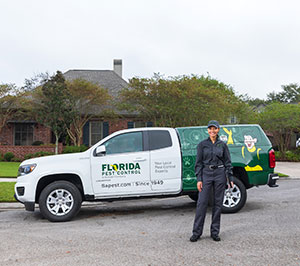Relied On A1 Exterminator Charlotte NC - Comprehensive Pest Solutions
Relied On A1 Exterminator Charlotte NC - Comprehensive Pest Solutions
Blog Article
Bed Bug Therapy Failure: Comparing Chemical Vs. Non-Chemical Solutions
In the realm of insect control, particularly when managing the persistent concern of bed insects, the choice between chemical and non-chemical therapy services can be a critical one. Both strategies use distinct advantages and drawbacks, influencing variables such as efficiency, safety considerations, and general cost. By analyzing the nuanced information of each technique, a clearer understanding of which path to go after in addressing a bed bug invasion can be attained.
Effectiveness of Chemical Therapies
Chemical therapies for bed bug infestations have been commonly acknowledged for their potent and fast effectiveness in getting rid of these parasites. When taking into consideration the efficiency of chemical treatments, it is essential to recognize that they can give a complete and fast solution to a bed bug trouble.
Moreover, chemical treatments have the benefit of offering recurring impacts, implying that they can continue to eliminate bed bugs even after the first application. This residual action is specifically beneficial in combating any kind of potential re-infestations. Additionally, the quick activity of chemical treatments can bring relief to people encountering severe bed pest problems, allowing them to gain back control of their space promptly.
Safety Interest In Chemical Solutions
One important element that requires cautious consideration when making use of chemical remedies for bed bug treatment is making sure the security of residents and the setting. Direct exposure to certain chemicals made use of in bed bug therapies can lead to respiratory system problems, skin inflammation, or various other unfavorable responses, particularly in individuals with pre-existing conditions or sensitivities.
In addition, the ecological influence of chemical options is another considerable consideration. Some pesticides made use of in bed insect therapies might be damaging to valuable pests, wildlife, and ecosystems if they seep right into the soil or water supply. It is important to utilize chemical therapies carefully, adhering to security standards, and considering much less harmful alternatives to reduce these risks and make certain the efficient and risk-free management of bed insect invasions.
Advantages of Non-Chemical Strategies
Thinking about the prospective security issues and ecological influence connected with chemical solutions for bed bug treatment, checking out non-chemical approaches offers an appealing choice with several distinctive benefits. Non-chemical techniques provide a much safer alternative for households, specifically those with pet dogs, people, or youngsters delicate to severe chemicals. These techniques remove the dangers of exposure to poisonous materials, minimizing the capacity for negative health and wellness impacts. Furthermore, non-chemical therapies are eco-friendly, as they do not add to air or water air pollution, making them a sustainable selection for bug control.
Additionally, non-chemical services can be efficient in targeting bed bugs, consisting of hard-to-reach areas where chemical therapies may not penetrate - A1 bed bug treatment in charlotte. Methods such as warm treatment, vacuuming, steam cleansing, and bed mattress encasements give thorough eradication without the usage of dangerous chemicals.
Limitations of Non-Chemical Treatments

Additionally, non-chemical therapies commonly need several applications to accomplish effective eradication. This can be lengthy and may not constantly ensure complete removal of all bed bugs and their eggs, particularly in hard-to-reach or hidden locations.
Additionally, the success of non-chemical therapies heavily relies upon proper execution and thoroughness, which can be challenging for people without expert know-how. Poor application of non-chemical approaches might result in insufficient removal, causing relentless invasions and the demand for additional treatments.
As a result, while non-chemical therapies have their advantages, it is crucial to recognize these constraints and consider them when determining one of the most effective technique for handling bed pest invasions.
Cost Comparison: Chemical Vs. Non-Chemical Options
Provided the restrictions related to non-chemical therapies, a necessary aspect to review in the context of bed bug monitoring is the expense comparison in between chemical and non-chemical alternatives. Chemical treatments generally include the application of pesticides by specialists, which can find more information range from $250 to $900 per area, depending upon the severity of the problem and the size of the location to be dealt with. In comparison, non-chemical therapies like warm treatment or heavy steam can be much more expensive, with costs varying from $1,000 to $6,000 for a whole home. While the initial price of chemical treatments might appear lower, several therapies may be called for to completely eliminate the problem, potentially raising the general price. On the other hand, non-chemical alternatives might supply a much more lasting and green option, although they can be cost-prohibitive for some people. Inevitably, when considering the cost of bed insect therapy choices, it is important to consider the ahead of time expenditures against the effectiveness and long-term sustainability of the my blog selected method.
Conclusion

Thinking about the potential safety and security concerns and ecological impact linked with chemical options for bed bug therapy, checking out non-chemical techniques offers an appealing alternative with numerous distinct benefits.Offered the limitations linked with non-chemical treatments, a vital facet to examine in the context of bed bug management is the price contrast between chemical and non-chemical alternatives. In contrast, non-chemical treatments like heat therapy or steam can be much more pricey, with costs ranging from $1,000 to $6,000 for a whole home. While the initial cost of chemical treatments may seem lower, numerous therapies might be required to fully get rid of the problem, possibly raising the total cost.In verdict, when comparing chemical and non-chemical bed insect treatment options, it is important to consider efficiency, safety and security, benefits, restrictions, and expense.
Report this page